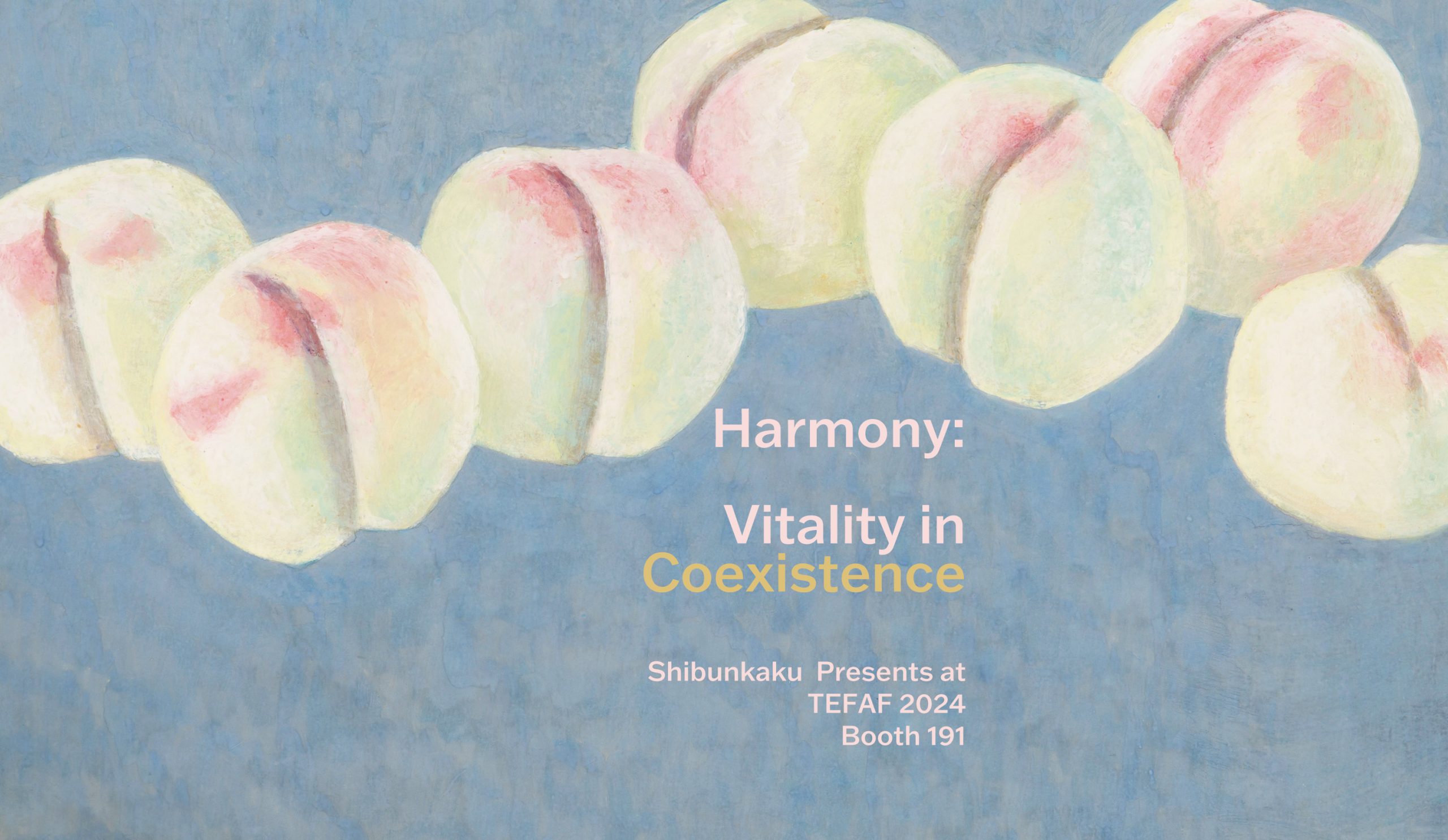Shibunkaku participates in TEFAF Maastricht 2024.
Shibunkaku is pleased to present at TEFAF Maastricht 2024, Harmony: Vitality in Coexistence. We will showcase works of representative Japanese artists spanning from mid-Edo period to modern paintings and postwar avant-garde calligraphy, all the way to contemporary bronze artworks.
Harmony: Vitality in Coexistence is encapsulated by the concept of Wa (和) in Japanese culture, a symbol of the nation of Japan, while also conveying meanings such as harmony, tenderness, and unity. Wa represents a state where conflicting elements collide, each enhancing the other, creating a symbiosis. Throughout history, the Japanese people have made the utmost use of the power of Wa in various aspects of life, uniquely incorporating elements imported from overseas, demonstrating an ability to select, adapt, and transform – a creativity inherent in Japanese life and culture. At its core lies the Japanese perception of nature, coexisting alongside it.
In Yoshida Kenkō’s (1283–1350) Tsurezuregusa (Essays in Idleness), there is a passage: “Useless things have ten thousand uses. Moreover, they are interesting.” This notion of “unused things” is precisely what Ma (間) represents, is both incorporated into every aspect life, and fosters Wa. The function of Ma – spatially, temporally, and psychologically – is dispensable for the workings of Wa, wherein diverse elements coexist and harmonize. This is why Japan is often referred to as a culture of Ma.
From the descriptive mastery of Itō Jakuchū’s (1716–1800) chickens, the creative interplay of color and form by Fukuda Heihachirō (1892–1974), Tokuoka Shinsen’s (1896–1972) profound natural perspectives, the emotional landscapes depicted through Ono Chikkyō’s (1889–1979) lines and subtle colors, the delicate nuances of Ikeda Yōson (1895–1988) paintings, the profound blackness, vivid reds, and sense of solitude in Yokoyama Misao’s (1920–1973) works, the continuation of the Rinpa aesthetic by Kayama Matazō (1927–2004), the use of bold strokes in Inoue Yūichi’s (1916–1985) work. These examples not only encompass traditional Japanese painting but also extend to representational and abstract oil paintings, avant-garde calligraphy, and crafts – all embodying the power of Wa inherent in artworks created by artists nurtured in Japan. We believe that Wa is profoundly meaningful amidst the current chaos of the world.
We are excited to welcome you to Shibunkaku at TEFAF Maastricht 2024.
TEFAF Maastricht 2024
March 9-14, 2024
MECC Maastricht <Google Maps>
Booth 191







